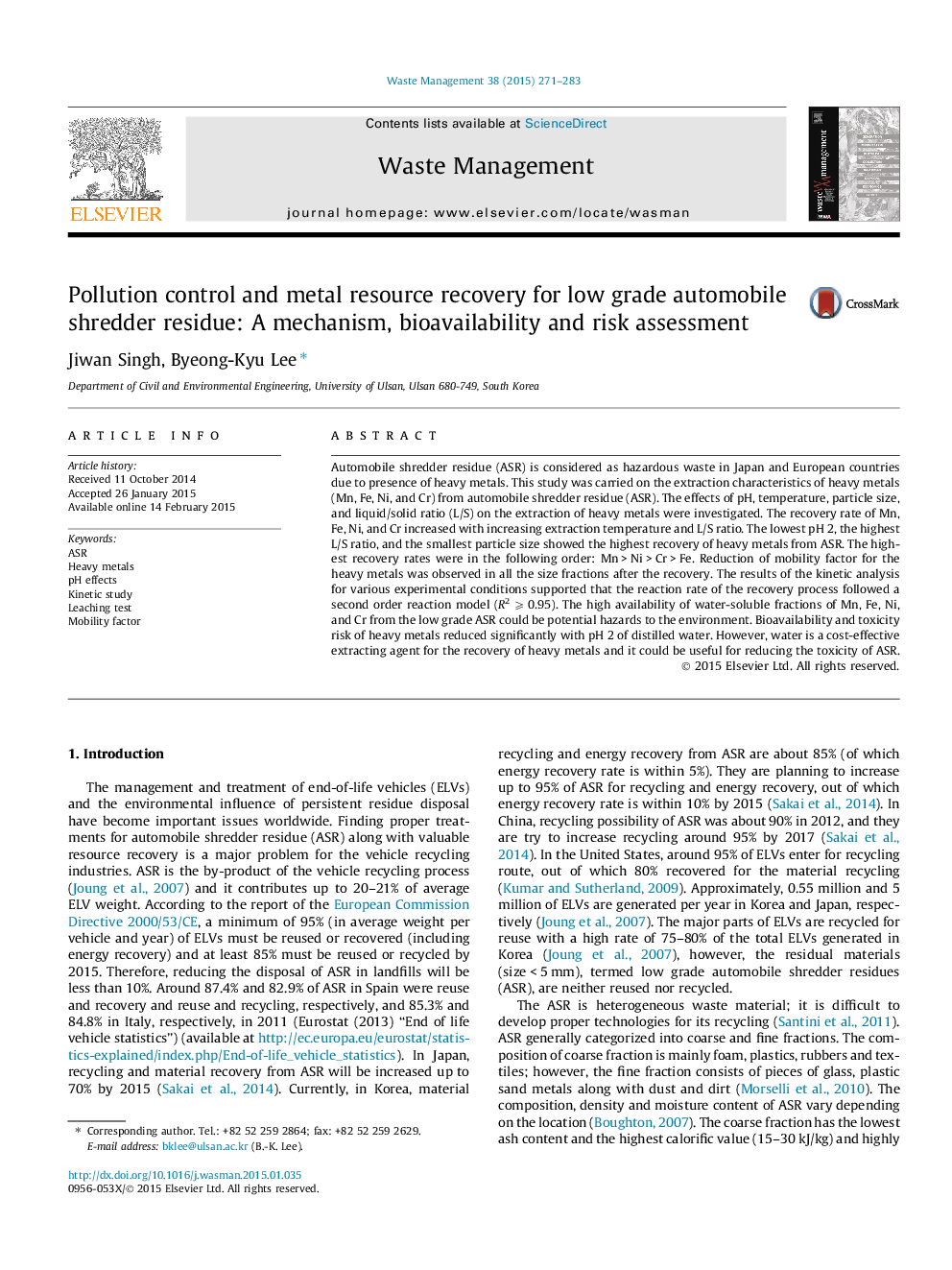| Article ID | Journal | Published Year | Pages | File Type |
|---|---|---|---|---|
| 4471413 | Waste Management | 2015 | 13 Pages |
•ASR is a hazardous material due to presence of bioavailable fractions of metals.•Recovery was carried out at different pH, L/S, temperature and different grain sizes.•Effects of pH, temperature, liquid/solid ratio and particle size were studied.•Bioavailability and risk of Mn, Fe, Ni and Cr in ASR reduced significantly after recovery.
Automobile shredder residue (ASR) is considered as hazardous waste in Japan and European countries due to presence of heavy metals. This study was carried on the extraction characteristics of heavy metals (Mn, Fe, Ni, and Cr) from automobile shredder residue (ASR). The effects of pH, temperature, particle size, and liquid/solid ratio (L/S) on the extraction of heavy metals were investigated. The recovery rate of Mn, Fe, Ni, and Cr increased with increasing extraction temperature and L/S ratio. The lowest pH 2, the highest L/S ratio, and the smallest particle size showed the highest recovery of heavy metals from ASR. The highest recovery rates were in the following order: Mn > Ni > Cr > Fe. Reduction of mobility factor for the heavy metals was observed in all the size fractions after the recovery. The results of the kinetic analysis for various experimental conditions supported that the reaction rate of the recovery process followed a second order reaction model (R2 ⩾ 0.95). The high availability of water-soluble fractions of Mn, Fe, Ni, and Cr from the low grade ASR could be potential hazards to the environment. Bioavailability and toxicity risk of heavy metals reduced significantly with pH 2 of distilled water. However, water is a cost-effective extracting agent for the recovery of heavy metals and it could be useful for reducing the toxicity of ASR.
Graphical abstractFigure optionsDownload full-size imageDownload as PowerPoint slide
